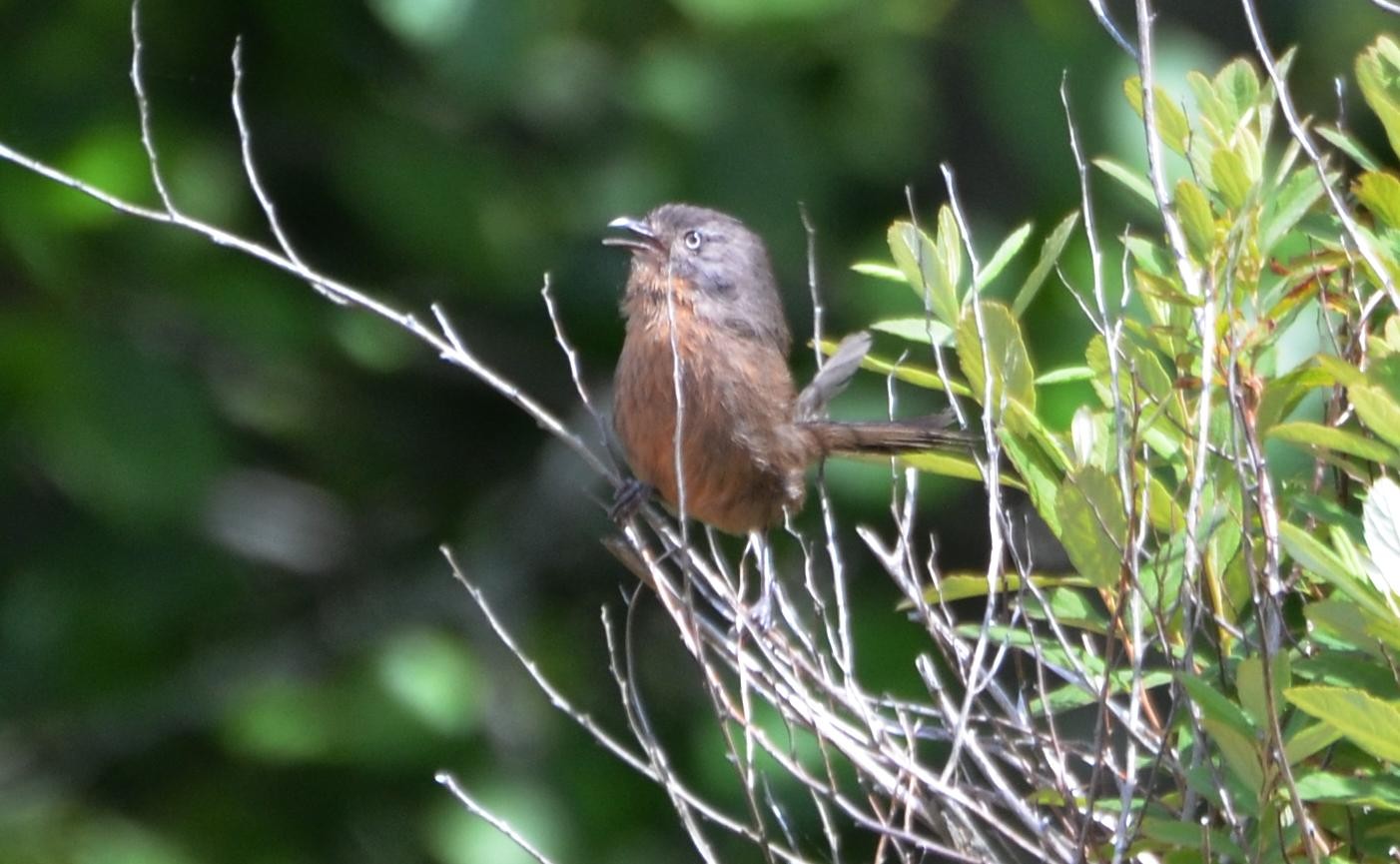Wrentit
A species of Wrentits Scientific name : Chamaea fasciata Genus : Wrentits
Wrentit, A species of Wrentits
Botanical name: Chamaea fasciata
Genus: Wrentits
Content
Description General Info
 Photo By Andy Reago & Chrissy McClarren , used under CC-BY-2.0 /Cropped and compressed from original
Photo By Andy Reago & Chrissy McClarren , used under CC-BY-2.0 /Cropped and compressed from original Description
The wrentit is a small, 15 cm (5.9 in) bird with uniform dull olive, brown, or grayish plumage. It has short wings and a long tail often held high (hence the comparison to wrens). It has a short bill and a pale iris. Given its retiring nature and loud voice, the wrentit is more likely to be detected by its call than by sight. The distinct sound that it makes is similar to the sound of a ping-pong ball falling on the table. 
Size
17 cm (6.5 in)
Life Expectancy
12 years
Nest Placement
Shrub
Clutch Size
1 - 5 eggs
Incubation Period
1 - 2 broods
Number of Broods
11 - 18 days
Nestling Period
11 - 19 days
Feeding Habits
Wrentit forages for beetles, scale insects, caterpillars, ants, larvae, and spiders on twigs and bark. They also consume fruits and seeds, particularly elderberry, snowberry, coffeeberry, twinberry, blackberry, and laurel sumac, by stretching to reach them. Poison oak seeds are notably crucial in their winter diet.
Habitat
Wrentit typically inhabits dense, shrubby landscapes along the West Coast. Preferring areas from sea level to middle elevations, it thrives in native chaparral, coastal scrub, and shrublands interspersed with plants like coyotebush and manzanita. It also resides in oak woodlands, mixed forests, and, to a lesser extent, suburban areas with adequate shrub cover. Wrentit generally avoids regions dominated by non-native vegetation. Its habitat is characterized by a mild, coastal climate and thick underbrush for nesting and foraging.
Nest Behavior
Wrentit couples build their nest cooperatively in 6-7 days. In general, both parents are known to partake in caring for the young.
Nest Characteristics
Wrentit's nests are hidden in dense shrubs like sage, poison oak, and more, at 1-9 feet above ground. They create a cup-shaped nest with stripped bark and spiderwebs, lined with soft grasses and lichens, measuring about 3.5 inches across.
Dite type
Insectivorous
General Info
Feeding Habits
Bird food type
Bird Feeder Type

Ground

Platform
Sounds
Song
Recording location: United States
Song
Recording location: United States
Behavior
The wrentit exhibits a discreet lifestyle, primarily foraging within shrubs where it remains largely concealed, subsisting on insects, seeds, and fruits which it adeptly gathers from foliage. It engages in unique predation behavior by securing larger prey with its feet to eat. It maneuvers through its habitat with cautious hops, pausing to scan its environment. In flight, the wrentit performs subtle tail pumps for stability. Known for forming life-long pair bonds, often established by 30-40 days of age, they are solitary yet form family groups post-nesting. They have a strong territorial instinct, maintaining year-round territories and exhibit remarkable vocal activity, used to ward off intruders and during mating season. The wrentit is also known for its characteristic posture of an upright tail when confronting threats or intruders.
Distribution Area
The wrentit is a sedentary (non-migratory) resident of a narrow strip of coastal habitat in the western coast of North America, being found from Oregon south through California, to Baja California, the north state of the Baja California peninsula. It is usually restricted to certain chaparral and woodland habitats. It nests in 1 metre (3 ft) high shrubs such as poison oak (Toxicodendron diversilobum), coyote bush (Baccharis pilularis) and California blackberry (Rubus ursinus). Logging and other changes in habitat have led to this species expanding its range recently, particularly northwards. 
Species Status
Not globally threatened.

 Photo By Andy Reago & Chrissy McClarren , used under CC-BY-2.0 /Cropped and compressed from original
Photo By Andy Reago & Chrissy McClarren , used under CC-BY-2.0 /Cropped and compressed from original Scientific Classification
Phylum
Chordates Class
Birds Order
Perching birds Family
Sylvia babblers Genus
Wrentits Species
Wrentit